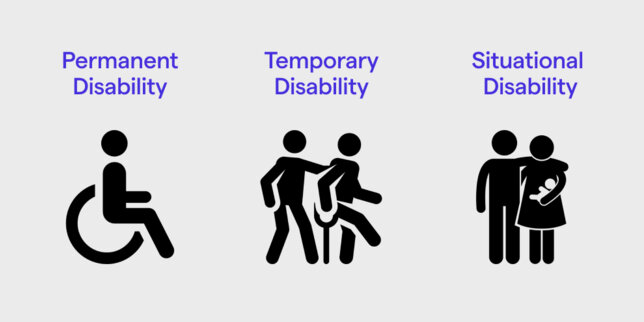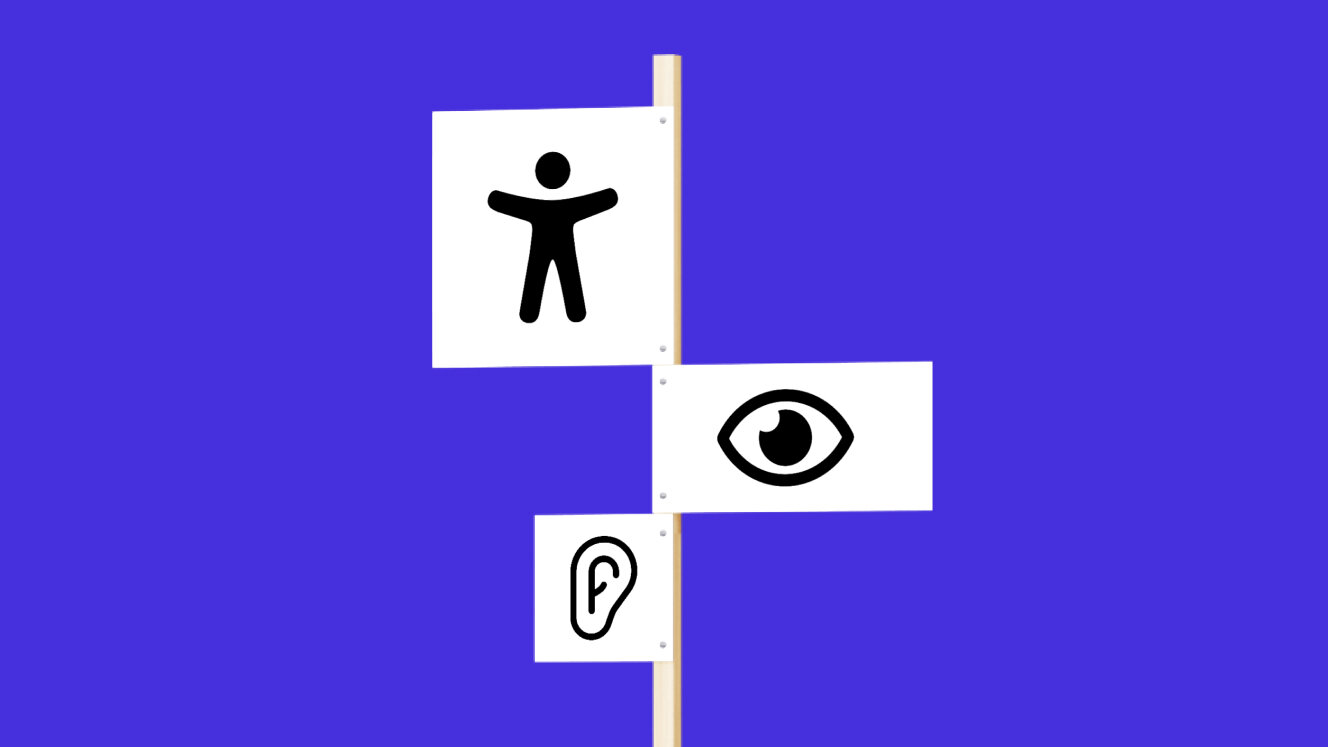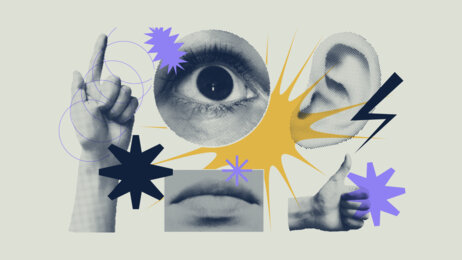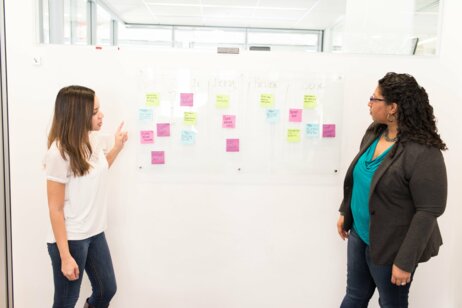
Kuba Kopecki
-
Nov 08, 2023
-
5 min read
What is digital accessibility?
Digital accessibility is a term used to describe the inclusive design and development of digital products that make them accessible to people with disabilities. This practice allows the creation of digital tools that people with visual, auditory, motor, cognitive, or neurological impairments can understand and navigate easily.
The World Wide Web Consortium (W3C) published the Web Content Accessibility Guidelines (WCAG) that instruct businesses on how to make their digital products (e.g., a website) accessible to everyone (we talked about them more in our article about what WCAG is). Digital accessibility, and therefore equal access to the digital world, is not only a legal requirement or an ethical responsibility, but it also makes for better business results.
Why does digital accessibility matter so much?
There are even up to 15%, so more than 1 billion, of Internet users that have some form of disability, and making the Internet an inclusive space for everyone should be considered an ethical and moral responsibility.
It is also a legal requirement in some countries, but more than that, digital accessibility allows for reaching a wider audience — and a bigger customer base leads to higher engagement, customer loyalty, and business growth. And the global population continues to age, increasing the number of people with age-related disabilities. This means that disabled people are a growing demographic worth addressing now rather than later.
Creating inclusive online solutions often ends in new designs and technological innovations that benefit not only disabled people but all users — they’re more user-centred and user-friendly, which means that everyone finds them easy and pleasant to use. User-centred products are better for all users as they come from more refined design decisions. Accessibility often challenges current designs and leads to new ideas. And innovative, accessible products that centre diversity and inclusion are better perceived by users and enhance the brand image, making it more positive.
Different types of disability
Medical and social model of disability
When talking about different types of disability, it’s important to note that there are two models of looking at a disability: medical and social. The medical model of disability assumes that the problem lies within a person and that there should be a medical treatment that helps better their situation or cure them. The social model of disability, however, says that the problem lies within our society rather than a person. It states that society is simply not adapted to everyone and that it’s within our power to make it better for every person. The social model of disability gives people with disabilities more control as it focuses on removing the obstacles that stop them from being independent in their lives. Digital accessibility follows the social model of disability by helping everyone take advantage of the digital world.
Visual impairments
There are different types and severity of visual impairment, e.g. blind people, colourblind people, and those with defective vision.
To make a website accessible for people with visual impairments, it needs to be designed with a screen reader in mind, including alternative texts for images and semantic HTML structure. It should also allow for keyboard navigation, as some people may use a keyboard instead of a mouse to navigate a website. It’s also crucial to use responsible layouts that don’t rely only on colour and other visual cues to convey information and provide the option to change the contrast, font size, and the possibility to use the site with zoom – even up to 500%.
Mobility impairments
To accommodate a person with a mobility impairment, the website should allow a user to navigate it with a keyboard instead of a mouse and offer clear focus indicators so that they can understand where they are on a page and which element is selected.
Hearing impairments
Although, in general, both video and audio content are not considered accessible if you have it on your website, it’s important to include captions or transcripts for all videos and audio on a website for people who are deaf or have other hearing impairments.
Cognitive impairments
Consistency and simplicity are the keys to a well-designed digital product (we talked about it in our article on design). Any digital product benefits from clear language and consistent layout, but it also makes it more accessible for those with cognitive impairments.
Speech impairments
Speech recognition is inaccessible for people with speech impairments, so there should always be an alternative input method or device, mainly keyboards.
Permanent, temporary, and situational disability
While some people have permanent disabilities, which we described above, we can all be temporarily disabled users. For example, when you’re sick, you can lose your voice, and – like people with speech impairments – you can’t use speech recognition. There’s also situational disability, one where the situation affects what you can and can’t do. In some situations, a certain feature may not be available to you. Even a sleepless night might become a “disability” when it comes to using digital products. That’s also why digital accessibility benefits us all – no matter what situation we or our users find ourselves in, they can still use our product.

Four principles of digital accessibility
Web Content Accessibility Guidelines (WCAG) define four core principles of digital accessibility: perceivable, operable, understandable, and robust; shortly: “POUR”. We talked about them in more detail in our article on WCAG.
Perceivable
The “Perceivable” principle underlines the importance of presenting all information and user interface components in a way that is perceived by everyone, regardless of their sensory abilities.
Following this principle includes:
- offering alternative text for non-text content for those who can’t perceive them visually,
- including captions and transcripts for multimedia content for those who have a hearing impairment,
- using contrasting colours for those with vision problems.
Operable
The “Operable” principle states that every digital product should be operable and navigable by various input methods and devices like keyboard, mouse, touch, and assistive technology.
Following this principle means making it possible for a digital product to be navigated using a keyboard for users who can’t use a mouse or touch screen.
Understandable
Each digital product should have clear and understandable functionality and content.
Following these principles includes:
- writing in plain and clear language,
- consistent and predictable navigation and interaction pattern design,
- showing error messages that not only explain the issue but also give instructions on how to fix the error if possible.
Robust
The “Robust” principle stresses that all content and technology should be easily accessed by any software or program that a potential user can have.
Following this principle means:
- using semantic HTML, CSS, and other technologies,
- using universally supported technologies.
Examples of digital accessibility
It’s good to follow the Web Content Accessibility Guidelines as it’s a great summary of the knowledge and helps ensure a basic level of accessibility. However, it’s important to keep in mind that there is no perfect solution. Every person is different; every person has different tools, different habits, and is in different situations. Following guidelines is important, but so is having our users in mind. So, an example is just an example, but it shouldn’t stop you from thinking about digital accessibility solutions that are catered specifically to your users.
Screen Reader compatibility
A digital product (a website or mobile application) should be designed with a screen reader in mind so that when a person with visual impairment tries to use it, they can easily navigate it and understand the provided content.
- Alternative texts for images let users with screen readers know their message and purpose.
- Descriptive link texts give users with visual impairments context for the link (especially a hyperlink).
Keyboard accessibility
Keyboard accessibility means a digital product can be accessed and operated using a keyboard alone. This is crucial for people with mobility impairments as well as those with visual impairments.
- Focus Indicators show users using a keyboard to navigate where they are on a website and what is selected.
- Logical Tab Order helps people using a keyboard to easily navigate it as they can easily assume where they will be once they hit the “Tab” key.
Captions and transcripts
Any audio or video content on a digital product should have captions or transcripts so that people with hearing impairments can also access the given information.
Website accessibility
Aside from what was mentioned above, a website should also have/offer:
- Semantic HTML: to allow people using assistive technologies to navigate the website better,
- Colour contrast: to allow everyone to read the content comfortably,
- Thought-through structure: the headings should communicate the content organisation of the page so that web browsers, plug-ins, and assistive technologies can use them to provide in-page navigation.
Mobile app accessibility
When designing a mobile application, it’s important to consider the following:
- Touch target size: when the touch target is big enough, it can be easily tapped by people with limited dexterity,
- Voice command functionality: voice command allows people with mobility impairments to navigate the app.
Digital accessibility is a legal requirement
Digital accessibility is a legal requirement in many countries worldwide as diversity and disability awareness get more recognition (you can check our free accessibility report for that!), and people push for more inclusive laws.
Some legislation can be covered in anti-discrimination laws as those aim to secure accessibility in various aspects of life. However, some countries have specific Web Accessibility legislation enforcing Web Content Accessibility Guidelines (WCAG) compliance.
For example, the United States set two guidelines and standards for their citizens: ADA Compliance and Section 508 Compliance. ADA is The Americans with Disabilities Act that bans discrimination against disabled people in various areas, and although it doesn’t specifically mention the Internet or digital technologies, courts have applied this law to a website or a platform as they described them as “places of public accommodation”. Section 508 Compliance is a law specific to federal agencies, organisations with federal funding, or organisations in contact with federal agencies in the US. It aims to make electronic and information technology accessible to people with disabilities. Section 508 gives specific requirements for technological and digital accessibility, in line with WCAG.
Although the laws may differ from country to country, there are too many benefits of digital accessibility to ignore. If a digital product can be accessed by any individual, regardless of their disability or lack thereof, it means growing a customer base as well as being prepared for any legal change in the future.
Summary
Digital accessibility should be a standard in digital products. The Internet is a tool for all, but you can only reach all if you ensure they can. Following the digital accessibility guidelines means not dismissing anyone and making a positive impact in the digital world as more and more companies adhere to WCAG.
— Debra Ruh (CEO at Ruh Global IMPACT, Executive Chair at Billion Strong, Host of Human Potential at Work AXSChat)








